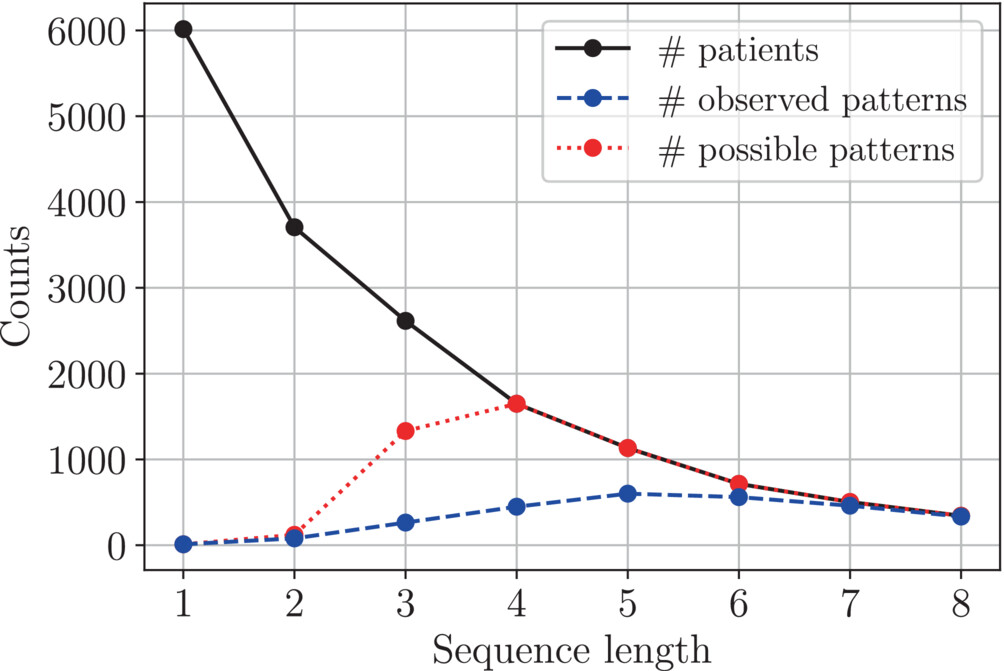Patterns in the Sequential Treatment of Patients With Rheumatoid Arthritis Starting a Biologic or Targeted Synthetic Disease-Modifying Antirheumatic Drug: 10-Year Experience From a US-Based Registry
ACR [Paper URL]
Abstract

Objective Developing and evaluating new treatment guidelines for rheumatoid arthritis (RA) based on observational data requires a quantitative understanding of patterns in current treatment practice with biologic and targeted synthetic disease-modifying antirheumatic drugs (b/tsDMARDs).
Methods We used data from the CorEvitas RA registry to study patients starting their first b/tsDMARD therapy, defined as the first line of therapy, between 2012 and the end of 2021. We identified treatment patterns as unique sequences of therapy changes following and including the first-line therapy. Therapy cycling was defined as switching back to a treatment from a previously used therapeutic class.
Results A total of 6015 b/tsDMARD-naïve patients (77% female) were included in the analysis. Their median age was 58 years, and their median disease duration was 3 years. In 2012–2014, 80% of the patients started a tumor necrosis factor inhibitor (TNFi) as their first b/tsDMARD. However, the use of TNFi decreased in favor of Janus kinase inhibitors since 2015. Although the number of treatment patterns was large, therapy cycling was relatively common. For example, 601 patterns were observed among 1133 patients who changed therapy at least four times, of whom 85.3% experienced therapy cycling. Furthermore, the duration of each of the first three lines of therapy decreased over the past decade. For example, the median duration of the first-line therapy was 153 days in 2018–2021 compared to 208 days in 2015–2017 (P < 0.001).
Conclusion First-line therapy was almost always TNFi, but diversity in treatment choice was high after that. This practice variation allows for proposing and evaluating new guidelines for sequential treatment of RA. It also presents statistical challenges to compare patients with different treatment sequences.